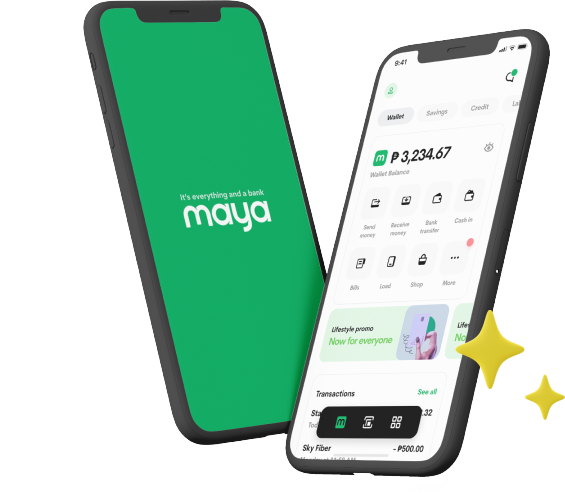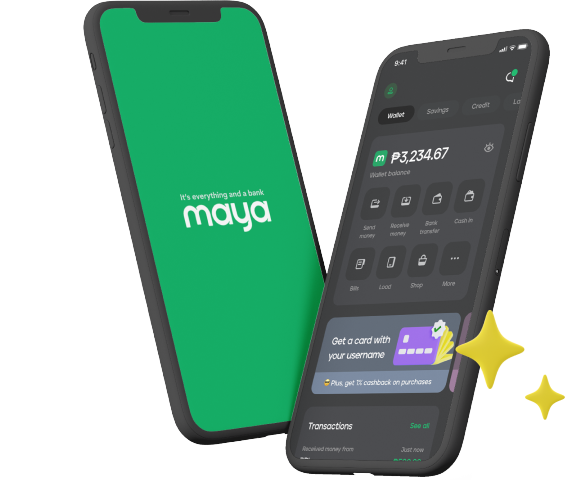
Peace of mind plays an essential role when it comes to choosing where to keep your hard-earned money. If you can trust your bank to protect your funds, then you’ll find it easier to completely focus on tasks that can help you earn money and attain your financial goals. At the same time, because your bank employs top-notch security measures and features, you’ll feel less stressed by emerging threats.
Maya, the country’s #1 digital bank, understands that smart consumers are concerned with safety, and as one of the most trusted digital banks in the Philippines, it puts security front and center. You might ask, then: is Maya safe? The answer is a resounding yes. Look no further if you want a modern bank with security features that give you more confidence and control over your digital banking experience. Here’s a list of reasons why you should create a Maya account and use it to ensure the safety of your digital funds
Logging in Is Secure and Private
When you log in to your Maya account, you are protected by three secure methods: an alphanumeric password, face ID, or fingerprint ID. These options give you the flexibility to pick what works best for your lifestyle without compromising safety. Biometrics, in particular, make it harder for unauthorized users to access your account, even if they get hold of your device.
Another Maya safety feature that is worth noting is that you can only log in to one device at a time. This makes it far more difficult for hackers to sneak in from a different phone or tablet without your knowledge. If you want to log in from a new device, you’ll need to enter a one-time password (OTP) sent directly to your registered number. This adds an extra layer of protection to prevent account takeovers.
Big Transactions Are Locked Behind OTP
One of the most powerful protections Maya offers is the use of OTPs for high-value or sensitive transactions. For example, if you’re transferring money from your Maya account to another bank or e-wallet, applying for Maya Easy Credit or Personal Loan, or making QR Ph payments, the app will prompt you to enter an OTP. This step is used to make sure it’s really you making the request, not someone who gained access to your phone.
If an incorrect OTP is entered too many times, Maya automatically disables the feature the user wants to access for 24 hours. This timeout gives you a safety buffer in case someone is trying to guess their way into your account or trick the system. It’s a proactive way to catch suspicious activity before it causes any damage.
Emergency Help Is Always Available
If you ever run into trouble, Maya makes it easy to reach out and get help. You can contact the Maya support team quickly through several hotlines: landline (+632) 8845-77-88, toll-free 1-800-1084-57788, or *788 for Smart network users. These options mean that no matter where you are or what phone you’re using, help is always just a call away.
Having easy access to customer service is a huge plus in emergencies, like if you suspect your account has been compromised or you accidentally approved a wrong transaction. Maya’s fast-response support simply shows that the leading digital bank in the Philippines takes customer protection seriously.
Maya Is a BSP-Supervised Financial Institution
More than a convenient e-wallet platform, Maya is a fully regulated bank that has to report to the Bangko Sentral ng Pilipinas (BSP). As one of the only six digital banks licensed by the BSP, Maya follows national standards for managing and protecting your money. This means that the bank operates under strict guidelines for safety, transparency, and consumer protection set by the country’s top financial regulator.
State-of-the-Art Anti-Fraud Technology
Scammers are getting smarter, but so are fintech technologies that protect customers. The Maya uses advanced anti-fraud technology that monitors your transactions and looks for anything suspicious. This behind-the-scenes protection helps detect unauthorized activity early and prevent losses before they happen. This type of real-time monitoring, in turn, gives you a safety net that many traditional banking apps still don’t provide.
Certified for the Highest Industry Standards
Maya follows strict international standards when it comes to data security. It’s Payment Card Industry Data Security Standard (PCI-DSS) compliant, which means it meets global best practices for handling cardholder data. This is the same standard used by top banks and financial institutions around the world.
On top of that, Maya boasts both ISO27001 (information security) and ISO27701 (privacy protection) certifications. These are proof that Maya goes the extra mile to keep your personal data safe from leaks, breaches, and misuse. As a Maya account owner, you can enjoy a greater degree of privacy and security in terms of how your data is handled. You don’t have to worry about your information being sold or left exposed.
Deposits Are Insured by the PDIC
Even in the unlikely event that something goes wrong, your money is still protected. Maya deposits are insured by the Philippine Deposit Insurance Corporation (PDIC) for up to PHP 1 million per depositor. This is the same protection offered by traditional banks, and it means you won’t lose your money if the bank faces a crisis or shuts down. It’s one more reason to trust Maya with your savings, salary, or emergency funds.
In a world where more and more of your money is saved and managed online, it’s a must to choose a financial services provider that prioritizes security and safety. Maya gives you strong protections across the board, whether you’re logging in, spending, saving, or simply checking your balance. These features, in turn, make it easier for you to enjoy the convenience of digital banking without sacrificing peace of mind. When your money’s secure, you can focus more on your goals and worry less about the "what-ifs."
You might also like
These Stories on Maya
4 min read
Oct 17, 2025 8:00:01 AM |
4 min read
Oct 15, 2025 8:00:00 AM |
4 min read
Oct 13, 2025 8:00:00 AM |




